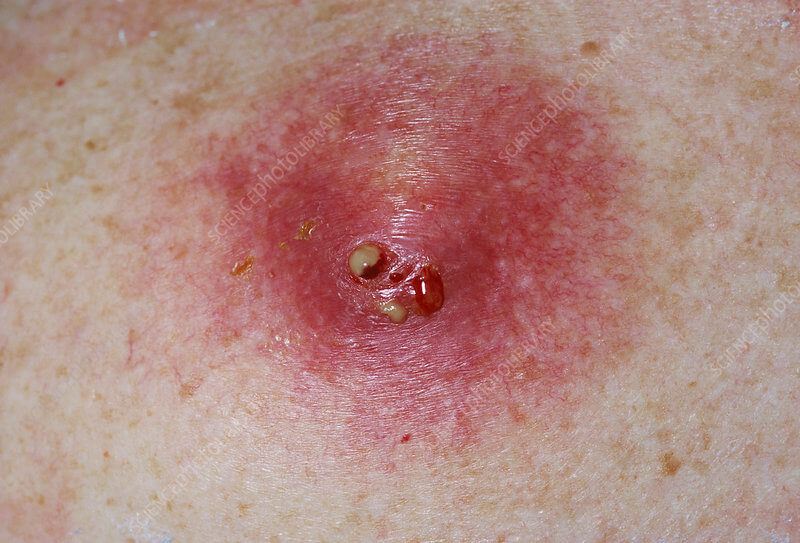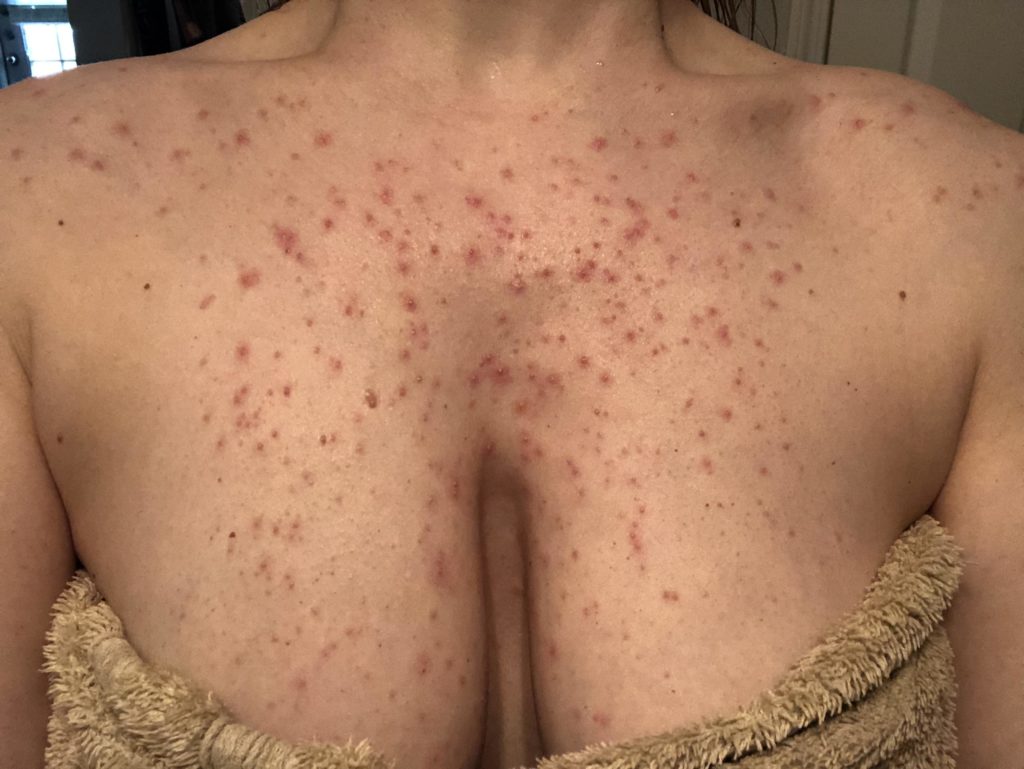Overview
Acne is a skin disease that happens when oil and dead skin cells clog the hair follicles. It induces pimples, whiteheads, and blackheads. Teenagers are the most affected by acne, but it affects people of all ages.
Acne, the most common skin disease, affects almost everyone to some degree, but it is particularly common in teenagers who are going through hormonal changes.
While there are effective acne remedies available, it can be stubborn. The pimples and bumps take a long time to heal, and once one starts to fade, more appear.
Acne can cause emotional distress as well as skin scarring, depending on the severity. The sooner you begin therapy, the better your chances of developing such issues.
Symptoms
The following are acne symptoms that differ depending on the severity of your condition:
- Whiteheads are a type of blemish that (closed plugged pores).
- Blackheads are a type of acne (open plugged pores).
- Tender, small red bumps (papules).
- Pimples (pustules) are papules that have pus at the tip of them.
- Under the skin, there are big, firm, painful lumps (nodules).
- Underneath the skin, there are painful, pus-filled lumps (cystic lesions).
- Its affects the face, forehead, chest, upper back, and shoulders most commonly.
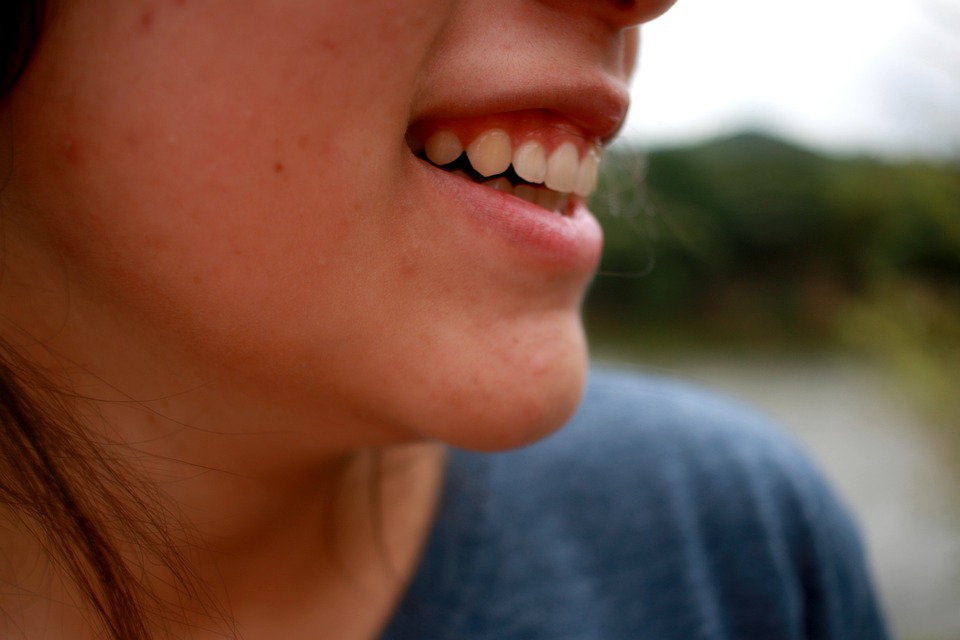
When do you see a doctor?
Consult your primary care physician if self-care treatments fail to clear your acne. He or she might be able to administer more powerful drugs. If your acne persists or becomes severe, you should seek medical attention from a dermatologist (dermatologist or Pediatric dermatologist).
It can last a lifetime for many women, with flare-ups typical a week before menstruation. In women who use contraception, this form of acne usually goes away without treatment.
A sudden onset of severe acne in older adults can indicate an underlying condition that necessitates medical attention.
Some common nonprescription acne lotions, cleansers, and other skin products, according to the Food and Drug Administration (FDA), can cause a serious reaction. This is a very unusual reaction, so don’t associate it with redness, itching, or itchiness in places where you’ve applied drugs or products.
If you experience any of the following symptoms after using a skin product, seek immediate medical attention.
- a feeling of faintness.
- Breathing problems.
- Eyes, face, lips, or tongue swelling.
- Throat constrictions.
It can be mild (a few pimples here and there), moderate (inflammatory papules), or extreme (a lot of pimples) (nodules and cysts). The seriousness of the disease determines the course of treatment.
Reasons for this:
What Causes Acne?
It is caused by four primary factors:
- Excess sebum (oil) output .
- Oil and dead skin cells clog hair follicles.
- Bacteria are microorganisms that live in the.
- Inflammation is a term used to describe the state of.
Since these areas of skin contain the most oil (sebaceous) glands, it usually occurs on the face, forehead, stomach, upper back, and shoulders. Oil glands are bound to hair follicles.
A whitehead can form when the follicle wall bulges. Alternatively, the plug may be exposed to the surface and darken, resulting in a blackhead. A blackhead can appear to be dirt trapped in the pores. The pore, however, is clogged with bacteria and oil, which turns brown when exposed to sunlight. When blocked hair follicles become inflamed or infected with bacteria, pimples appear as raised red spots with a white core. Blockages and inflammation deep inside the hair follicles cause cyst like lumps to form underneath the skin’s surface. Other pores in your skin, such as sweat gland openings, are normally unaffected by acne.
it can be triggered or worsened by a variety of factors, including:
Hormonal shifts:
Androgens are hormones that cause the sebaceous glands to expand and produce more sebum in both boys and girls throughout puberty. Hormone changes, especially in women, may cause breakouts in their forties and fifties.
Medications in particular:
Drugs containing corticosteroids, testosterone, or lithium are examples.
Diet is a must. According to studies, eating some foods, such as carbohydrate-rich foods like bread, bagels, and chips, may aggravate acne. More research is required to see whether adhering to particular dietary restrictions will help people with acne.
There’s a lot of it. Stress does not cause acne, but it can aggravate it if you already have it.
Myths on acne:
It is unaffected by these factors:
Chocolate and greasy foods are two of my favourite foods. Acne is not exacerbated by eating chocolate or greasy foods.
Hygiene is important. Acne isn’t caused by clogged pores. Scrubbing the skin too hard or washing with strong soaps or chemicals, on the other hand, irritates the skin and can aggravate acne.
Cosmetics are a form of cosmetics. Cosmetics don’t always make acne worse, especially if you use oil-free, non comedogenic makeup and remove it on a regular basis. Cosmetics that aren’t sticky don’t mess with the efficacy of acne medications.
More Information
Difficulties:
Acne complications are more common in people with darker skin types than in people with lighter skin types:
Scars:
Scars are a type of scar. After acne has healed, pitted skin (acne scars) and deep scars (keloids) can last a long time.
Also read: Is Witch Hazel Making Your Skin Worse?
Skin changes:
The appearance of the skin varies. After acne has healed, the infected skin may appear darker (hyper pigmented) or lighter (hypo pigmented) than it was before.
Risk factors:
Acne is caused by a number of causes, including:
Age is a factor:
Acne can affect people of all ages, but it is most common among teenagers.
Hormonal shifts:
During puberty or pregnancy, such changes are normal.
Family history:
It is influenced by genetics. You’re more likely to get acne if both of your parents have it.
Substances that are greasy or sticky. When your skin comes into contact with oil or oily lotions and creams, acne can grow.
What you need to know about acne:
Acne is a chronic, inflammatory skin disorder that causes pimples and spots on the face, shoulders, back, neck, stomach, and upper arms, among other places.
It is a chronic, inflammatory skin disorder that causes pimples and spots on the face, shoulders, back, neck, stomach, and upper arms, among other places.
It manifests itself as whiteheads, blackheads, pimples, cysts, and nodules.
It is the most common skin disorder in the United States, with up to 50 million people affected each year.
It is most common during puberty, when the sebaceous glands become active, but it can happen at any age. It is not harmful, but it can leave marks on the skin.
Male hormones released by the adrenal glands in both males and females activate the glands, which contain oil.
Between the ages of 12 and 24, at least 85% of people in the United States suffer from acne.
Also read: Inspiring story of Dark Asian Skin Beauty and Its Attributes
Fast facts on acne:
Here are some acne details to consider. The main article has more details.
- Its is a skin condition that affects the oil glands located at the base of hair follicles.
- It affects three out of every four people aged 11 to 30.
- It is not harmful, but it can leave marks on the skin.
- Treatment is determined by how serious and chronic the condition is.
- Genetics, the menstrual cycle, anxiety and tension, hot and humid temperatures, oil-based makeup, and squeezing pimples are all risk factors.
Also read: How To Conceal Pimples and Spot Treatment
Home remedies:
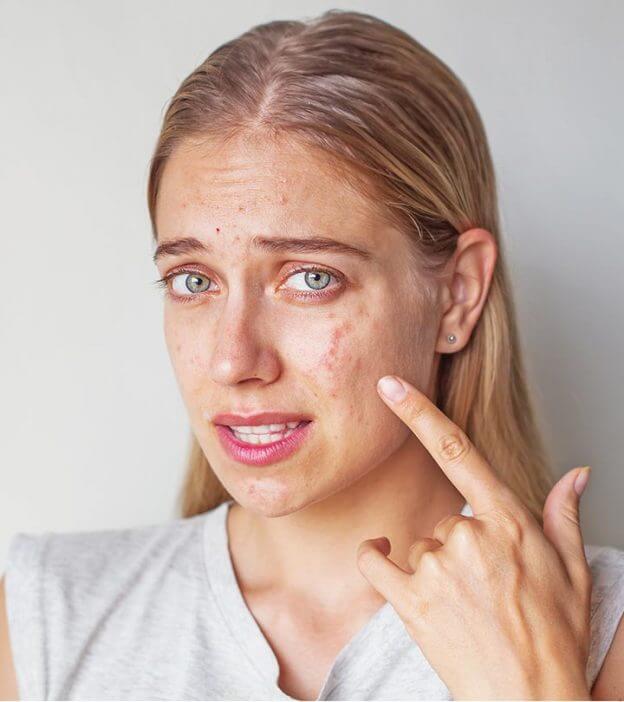
There are several home remedies for acne that have been proposed, although not all of them have been scientifically validated.
Diet:
It’s unknown if diet plays a part in acne aggravation. Scientists discovered that people who eat a diet rich in vitamins A and E, as well as zinc, could have a lower risk of extreme acne. According to one study, the relation between acne and diet is “controversial,” but a low-glycemic-load diet can aid.
Tea-tree oil:
According to the findings of a 60-patient study published in the Indian Journal of Dermatology, Venereology, and Leprology, 5-percent tea-tree oil can help treat mild to moderate acne.
If you’re looking to buy tea-tree oil, there’s a large range available online, with thousands of customer reviews.
Tea:
Tea polyphenols, including green tea polyphenols, have been shown to help reduce sebum development and treat it when used topically. However, rather than using tea directly, the compounds in this case were derived from it.
Moisturizers:
According to researchers, moisturisers can help to soothe the skin, particularly in people who are taking acne medications like isotretinoin. Moisturizers containing aloe vera or witch hazel at a concentration of at least 10% can be calming and probably anti-inflammatory.
Reasons for this:
Pores in human skin attach to oil glands under the surface. The glands and pores are linked by follicles. Tiny sacs that contain and secrete liquid are known as follicles.
Sebum is an oily liquid produced by the glands. Sebum transports dead skin cells from the follicles to the skin’s surface. A tiny hair develops out of the skin through the follicle.
When these follicles become clogged, pimples form and oil accumulates under the skin.
A plug may form when skin cells, sebum, and hair clump together. This plug becomes infected with bacteria, resulting in swelling. When the plug begins to break down, a pimple appears.
The bacteria Propionibacterium acnes (P. acnes) lives on the skin and contributes to the infection of pimples.
According to research, the magnitude and frequency of acne are influenced by the bacteria strain. Acne bacteria do not always cause pimples. One strain aids in the prevention of pimples.
Hormonal factors:
It is caused by a variety of causes, but the most common is an increase in androgen levels.
Androgen is a hormone whose levels increase as puberty progresses. It is converted to oestrogen in women.
The oil glands under the skin expand as androgen levels rise. More sebum is produced by the swollen gland. Excess sebum can cause bacteria to develop by breaking down cellular walls in the pores.
Other possible triggers:
According to some studies, genetic factors can increase the risk.
Other factors to consider are:
- some androgen and lithium-containing drugs
- cosmetics that are greasy
- hormonal shifts
- stress on the mind
- Periods of menstruation
Treatment:
Treatment is determined by the severity and persistence of the acne.
Mild acne:
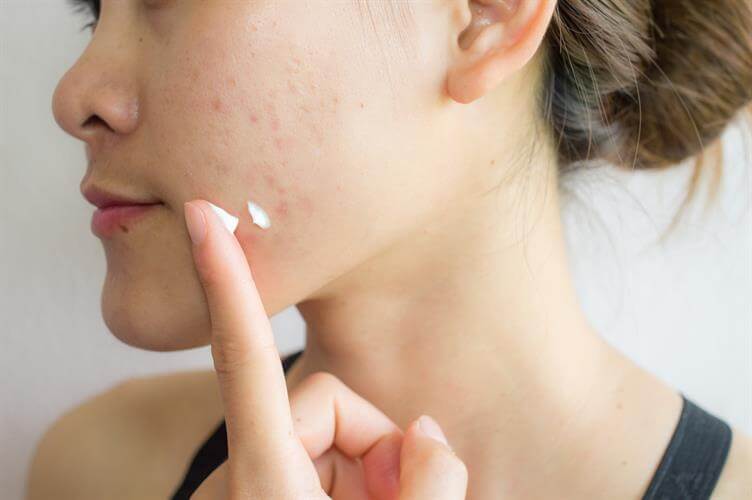
Mild acne may be treated with over-the-counter (OTC) drugs applied to the skin, such as gels, soaps, pads, creams, and lotions.
Sensitive skin responds best to creams and lotions. Alcohol-based gels are best for oily skin because they dry it out.
The following active ingredients can be used in over-the-counter acne treatments:
- Resorcinol is a substance that aids in the removal of blackheads and whiteheads.
- Benzoyl peroxide destroys bacteria, speeds up skin replacement, and reduces sebum development.
- Salicylic acid helps break down blackheads and whiteheads while also reducing inflammation and swelling.
- Sulfur: the exact mechanism is unclear.
- Retin-A promotes cell turnover, which aids in the unblocking of pores.
- Azelaic acid enhances the cells that line the follicles, decreases bacterial growth, and prevents sebum eruptions. For acne, there is a cream, but for rosacea, there are other options.
Starting with the lowest strengths is recommended, as certain formulations can cause skin irritation, redness, or burning when used for the first time.
These side effects usually fade away with continued use. Consult a physician if this is not the case.
Treating moderate to severe acne:
More serious cases should be treated by a dermatologist.
They can prescribe a stronger gel or cream than over-the-counter drugs, as well as an oral or topical antibiotic.
Corticosteroid injection:
It is possible for an acne cyst to burst if it becomes extremely inflamed. Scarring can result as a result of this.
An inflamed cyst can be treated with a diluted corticosteroid injection by a specialist.
This will aid in the prevention of scarring, the reduction of inflammation, and the speeding up of the healing process. Within a few days, the cyst will dissolve.
Antibiotics taken orally:
Patients with mild to extreme acne can be administered oral antibiotics for up to 6 months.
These are intended to reduce the number of P. Acnes in the population. The dose would be high at first, then gradually decrease as the acne clears.
P. acnes may become immune to the antibiotic over time, necessitating the use of a different antibiotic. Topical antibiotics are more likely to become immune to acne than oral antibiotics.
Antibiotics can stop bacteria from growing and reduce inflammation.
Acne is usually treated with erythromycin and tetracycline.
Contraceptives that are taken orally:
By suppressing the overactive gland, oral contraceptives may help women control acne. They’re widely used to treat acne for a long time.
These may not be appropriate for women who:
- have a problem with blood clotting
- cigarette
- have a migraine history
- are over the age of 35
- It’s crucial to see a gynaecologist first.
Topical antimicrobials:
In patients with mild to extreme acne, topical antimicrobials are also used to suppress P. acnes. Clindamycin and sodium sulfacetamide are two examples.
A topical retinoid may be prescribed by the dermatologist.
Topical retinoids are vitamin A derivatives. They unclog pores and avoid the formation of whiteheads and blackheads.
Adapalene, tazarotene, and tretinoin are examples of topical retinoids prescribed in the United States.
Isotretinoin:
Isotretinoin is a form of vitamin A that is used to treat acne.
This is a powerful oral retinoid that is used to treat extreme cystic acne and acne that hasn’t reacted to other drugs or treatments.
It’s a tightly regulated drug with potentially fatal side effects. A consent document must be signed by the patient to acknowledge that they are aware of the risks.
Dry skin, dry lips, nosebleeds, foetal anomalies if used during pregnancy, and mood swings are all side effects.
Vitamin A supplements should be avoided by isotretinoin patients since they can cause vitamin A toxicity.
Types:
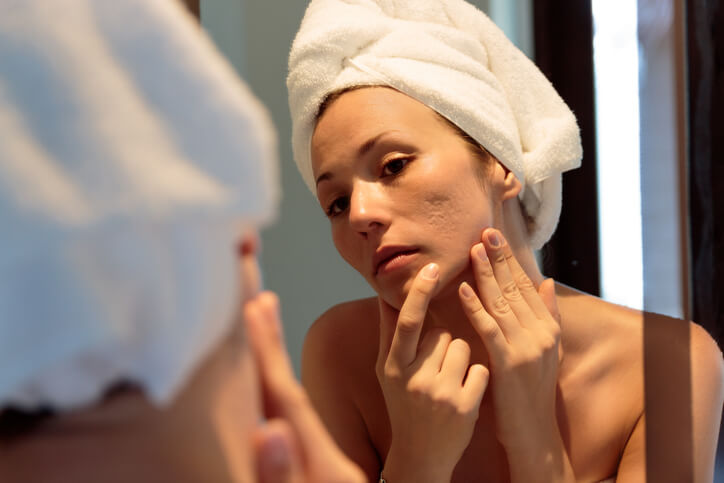
Acne pimples vary in size, color, and level of pain.
The following are examples of potential types:
- Whiteheads are tiny bumps that remain under the skin.
- Blackheads: These are clear blackheads that grow on the skin’s surface.
- Papules are tiny, typically pink bumps that appear on the skin’s surface.
- Pustules are small bumps on the skin’s surface that are easily noticeable. They’re red at the bottom and have pus on top.
- Nodules: Clearly visible nodules on the skin’s surface. They are big, firm, and painful pimples that have penetrated the skin deeply.
- Cysts: Cysts are evident on the skin’s surface. They’re swollen and sore, and they’re packed with pus. Cysts can leave marks on the skin.
Prevention and management tips:
Here are some tips for caring for acne-prone or acne-prone skin.
- Wash your face with warm water and a mild acne-specific soap no more than twice a day.
- Scrubbing the skin or popping pimples will spread the infection deeper into the skin, causing more blocking, swelling, and redness.
- Avoid popping pimples because scarring is more likely.
- A specialist will treat a pimple that needs to be removed as soon as possible for cosmetic purposes.
- Keep your hands away from your face.
- When talking on the phone, keep it away from your face because it’s likely to contain sebum and skin residue.
- Hands should be washed regularly, particularly before using lotions, creams, or cosmetics.
- Since spectacles absorb sebum and skin residue, they should be cleaned on a regular basis.
- If you have acne on your back, shoulders, or chest, wear loose clothing to allow your skin to breathe. Avoid wearing tight clothing like headbands, caps, and scarves, or wash them often if you do.
- Choose cosmetics that is gentle on the skin and steer clear of oil-based items. Before going to bed, take off your makeup.
- When shaving, use an electric shaver or a pair of sharp safety razors. Until applying shaving cream, soften the skin and beard with warm soapy water.
- Hair absorbs sebum and skin residue, so keep it clean. Hair items containing cocoa butter, for example, should be avoided.
- Excessive sun exposure can cause the skin to develop more sebum, so avoid it. Sunburn is a side effect of some acne treatments.
- Anxiety and stress may trigger a rise in the output of cortisol and adrenaline, both of which aggravate acne.
- To avoid sweating in hot and humid areas, try to stay cool and dry.
- Acne is a common skin condition. It can cause a lot of humiliation, but there is help and it works in a lot of situations.
- Your skin is subjected to friction or pressure. Phones, cellphones, helmets, close collars, and backpacks can all contribute to this.
Does peanut butter cause acne? Everything to know
Acne is a common skin disorder that occurs when oil collects in hair follicles, trapping dead skin cells and debris. Inflammation, bacteria, hormones, and a variety of other factors may all play a role in the issue.
No studies have looked into the connection between peanut butter and acne. However, the added sugars in some peanut butters, as well as compounds like omega-6 fatty acids, can aggravate acne in some people.
We’ll look at what the data says about peanut butter’s alleged acne-causing properties. We also look at the nutritional profile of this food and give some general advice on how to avoid the skin issue.
Trans fats:

Since peanut butter contains trans fats, some people believe it is bad for acne. Trans fats, which have been linked to diet-induced acne, are found in a lot of fatty or processed fast foods.
Trans fat levels in peanut butter, on the other hand, were almost undetectable in a 2016 report.
Meanwhile, trans fats have been banned in the United States by the Food and Drug Administration (FDA), so peanut butter in the country no longer contains them.
In the U.S., peanut butter can no longer contain trans fats. It had very little to begin with.
Saturated fats:
Saturated fats were linked to exacerbated acne in 248 participants aged 18–25 in a 2014 study.
A single serving of peanut butter (45 g) contains 4.54 g of saturated fat, which is comparable to the amount found in other oils.
Saturated fat, in moderation, is not as dangerous as some people believe. A saturated-fat-rich diet, which may include a lot of ultra-processed and fried foods, may raise the risk of chronic diseases.
Peanut butter does contain saturated fat, which a person should consume in moderation to manage acne.
Omega-6s:
Omega-6 fatty acids, like omega-3 fatty acids, are essential fatty acids that must be included in one’s diet.
Ultra-processed foods, which are high in omega-6s but low in omega-3s, are commonly found in the Western diet. Peanut butter, which contains a variety of oils, including palm oil, is a good source of omega-6 fatty acids.
The body needs both omega-6 and omega-3 fatty acids, but finding the right balance is crucial. A diet high in omega-6s, which are pro-inflammatory, and low in omega-3s, which are anti-inflammatory, may have negative health consequences.
Since acne is a chronic inflammatory disorder, an imbalance favouring pro-inflammatory omega-6s can aggravate the problem. According to a 2017 report, high omega-6 levels in the diet can contribute to an increase in acne.
Try to strike a balance between omega-6s and omega-3s for the best skin health. This usually entails eating more omega-3s and less omega-6s, which are present in processed foods and some vegetable oils like soybean oil.
Peanut butter contains omega-6 fatty acids, which may make acne worse. Consuming fewer omega-6s and more omega-3s may help.
Agglutinin from peanuts:
Peanut agglutinin is a lectin, which is a form of protein.
Lectins are difficult to absorb and can cause irritation in the small intestine. Increased intestinal permeability can result from this damage, making it easier for substances in the intestines to leak into the bloodstream.
Intestinal permeability has been linked to acne, according to a 2019 review, possibly because it causes inflammation and damages the immune system.
Drawing a conclusion, on the other hand, necessitates additional analysis. There have been no research linking peanut agglutinin, acne, and intestinal permeability.
Furthermore, a 2011 study found that when peanuts are fried, their lectin levels decrease significantly. Overall, there is no proof that the lectin content of roasted peanuts in peanut butter causes acne.
Peanut butter does not appear to contain enough peanut agglutinin to induce acne at this time.
Sugar that has been added:
Many peanut butter manufacturers sweeten their products with sugar or other sweeteners. Sugar is present in a single serving of 45 g, or 4.72 g.
In addition, a 2012 study found that consuming added sugar on a regular basis increases the risk of acne. As a result, it’s likely that eating peanut butter with added sugar on a daily basis contributes to breakouts.
Since blood sugar spikes can cause acne, it’s important to keep an eye on the added sugar content of foods like baked goods and jelly that might be served with peanut butter.
Look for unsweetened peanut butters and read the ingredient lists on labels carefully if you want to consume less sugar. “No added sugar” is also advertised on peanut butter and other items.
Some peanut butters contain added sugar, which can aggravate or cause acne.
Peanut butter has many health benefits:
Peanut butter is an extremely nutrient-dense snack. A single serving of 45 g of protein and 2.16 g of dietary fibre contains 10.1 g of protein and 2.16 g of dietary fibre. Vitamin E, folate, and other nutrients are also present.
According to a 2013 report, switching to a healthier peanut butter can help some people avoid blood sugar spikes.
It can also aid in the increase of heart-healthy cholesterol.
Other acne-prevention options:
The American Academy of Dermatology Association recommends a low-glycemic diet that includes whole grains, vegetables, lean sources of protein, healthy fats, and fruits to help prevent acne.
Some acne prevention options include:
- At least twice a day, wash your face with a gentle soap.
- Scrubs and other harsh materials should be avoided.
- avoiding direct sunlight
- tanning beds are not used
- hair is washed on a daily basis
- Picking or rubbing acne or the scars is not a good idea.
Summary:
Acne is unlikely to be caused by peanut butter. Despite the fact that certain products contain added sugar, the levels of ingredients that could cause acne are generally low. Peanut butter is also a healthy source of a number of essential nutrients.
If peanut butter appears to be causing breakouts, a person can try eliminating it from their diet for a while to see if it helps. Alternatively, a person might try other methods, such as switching to a mild soap.
Acne can be treated with a variety of over-the-counter medications and home remedies.
The advantages of using a humidifier:
Humidifiers add warmth to the air, which may help people who suffer from respiratory problems or have dry skin.
Humidifiers may be used in a variety of ways in the home or workplace, but they do come with certain risks.
Read about the advantages of humidifiers, how to use them properly, and what precautions to take in this article.
Humidity and Dryness:
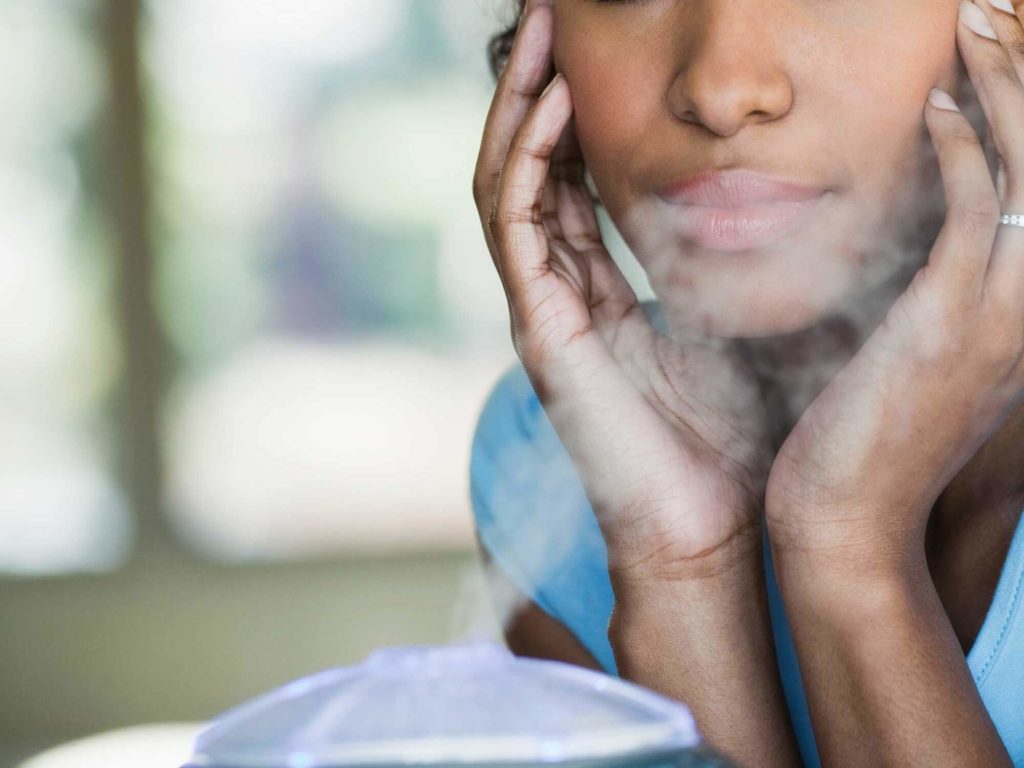
Dry air may cause skin to lose moisture and respiratory symptoms to worsen over time. A humidifier may help to alleviate these issues by adding moisture to the air.
Humidifiers can benefit people who suffer from the following ailments:
- irritated eyes and dry skin
- Throat dryness or allergies to the airways
- coughing a lot
- swollen noses
- headaches in the sinuses
- lips that have been broken
There are five different types of humidifiers, each with its own set of advantages:
During the summer months, when the weather is hot and the air produces more allergens, some people experience respiratory symptoms. Air conditioners and fans can disperse dry air in the room, and air conditioners can also remove moisture. During this time of year, a humidifier can be useful.
People, on the other hand, are more likely to benefit from a humidifier during the winter months, as the dryness of the lungs, nose, and lips is exacerbated by the cold weather. Furthermore, some forms of central heating may cause indoor air to become dry.
The following are some of the advantages of using a humidifier:
1.Influenza prevention:
Humidifiers, according to the authors of one report, can reduce the risk of catching the flu. Researchers discovered that when the influenza virus was released into the air through a simulated cough, humidity levels above 40% quickly deactivated virus particles, rendering them much less contagious.
2.Increasing the effectiveness of a cough:
A dry, ineffective cough may be brought about by dry air. Increasing the humidity in the air will help to bring more moisture into the airways, making coughing more effective. A productive cough allows stuck or sticky phlegm to be released.
3.Getting rid of snoring:
Snoring may be reduced by the the amount of moisture in the air. When the air is dry, the airways are less likely to be well lubricated, which may exacerbate snoring.
Running a humidifier at night may help to alleviate certain symptoms by adding humidity to the air.
4.Moisturizing the skin and hair:
In the winter, some people find that their skin, lips, and hair become dry and brittle.
Many forms of heating systems circulate hot, dry air in the home or workplace, causing dry, itchy, or flaky skin. Outside, the cold air can also dry out the skin.
Adding moisture to the indoor air with a humidifier can help to reduce the incidence of dry, cracked skin.
5.Household advantages:
Humidifier moisture can be beneficial in the home. Wood floors and furniture may last longer, and moisture-loving houseplants may become more vibrant. Humidity can also aid in the prevention of wallpaper cracking and the accumulation of static electricity.
Humid air can also feel colder than dry air, potentially saving money on heating bills during the winter months.
Humidifiers come in a variety of shapes and sizes:
While most humidifiers perform the same basic function of adding moisture to the air, there are a variety of options:
- Steam vaporizers: These units use electricity to generate steam, which then cools before leaving the unit. However, there is a chance of skin burns, so steam vaporizers should not be used around children.
- Ultrasonic humidifiers use vibrations to vaporize water rather than electricity.
- Evaporators blast air past evaporating water to create humidity.
- Impeller humidifiers: These are usually child-friendly and vaporize water using spinning discs rather than heat.
- Central humidifiers: These systems are connected to the home or office’s central air conditioning to add moisture to the entire room.
Sizes can differ. Personal humidifiers are compact and simple to transport, while console humidifiers are large enough to add moisture to an entire house or office.
Acne Vulgaris:
Acne vulgaris is the medical term for widespread acne, which is characterised by the appearance of blackheads, whiteheads, and other pimples on the skin. The face, stomach, shoulders, and back are the most popular areas for breakouts. While over-the-counter treatments can help mild acne, more serious cases should be treated by a dermatologist.
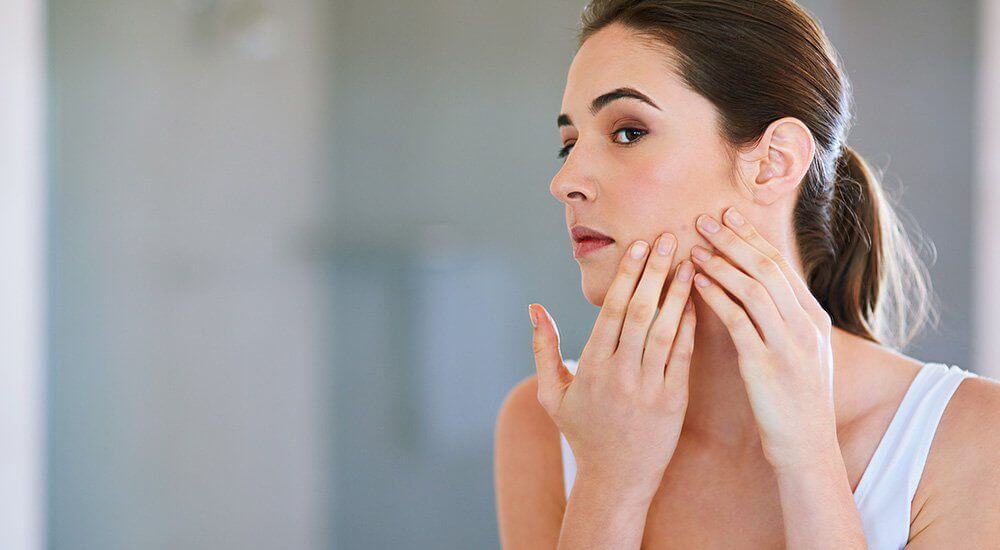
Black Heads Are a Form Of Acne:
Come done that are open at the skin’s surface are known as blackheads. They’re clogged with dead skin cells and excess oil. The come done does not turn black because of dirt. The black colour is caused by the uneven reflection of light from clogged hair follicles. Over-the-counter drugs are commonly used to treat blackheads.
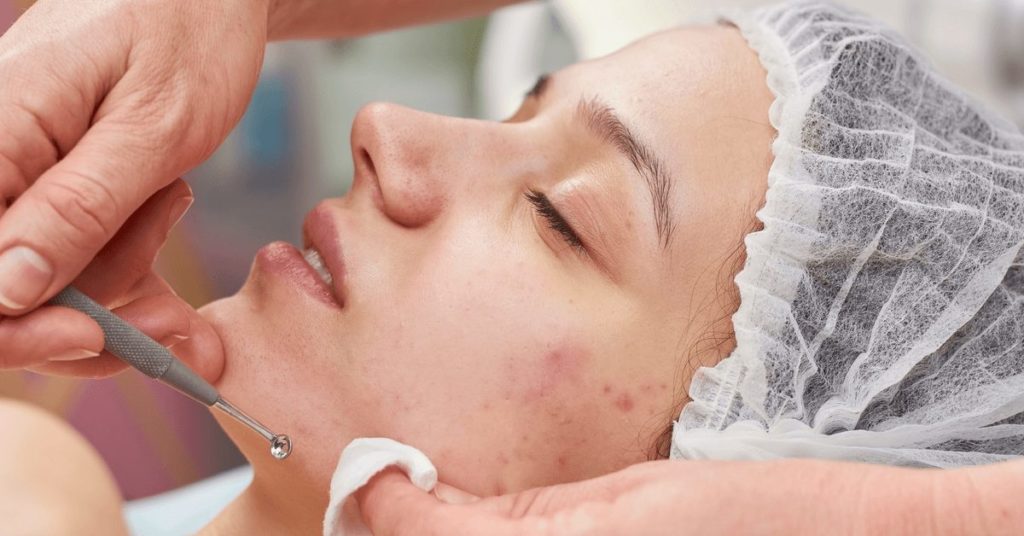
Whiteheads:
Whiteheads are come done that remain closed at the skin’s surface. This occurs when oil and skin cells obstruct the opening of a clogged hair follicle. Whiteheads may be treated with many of the same over-the-counter medications that are used to treat blackheads.
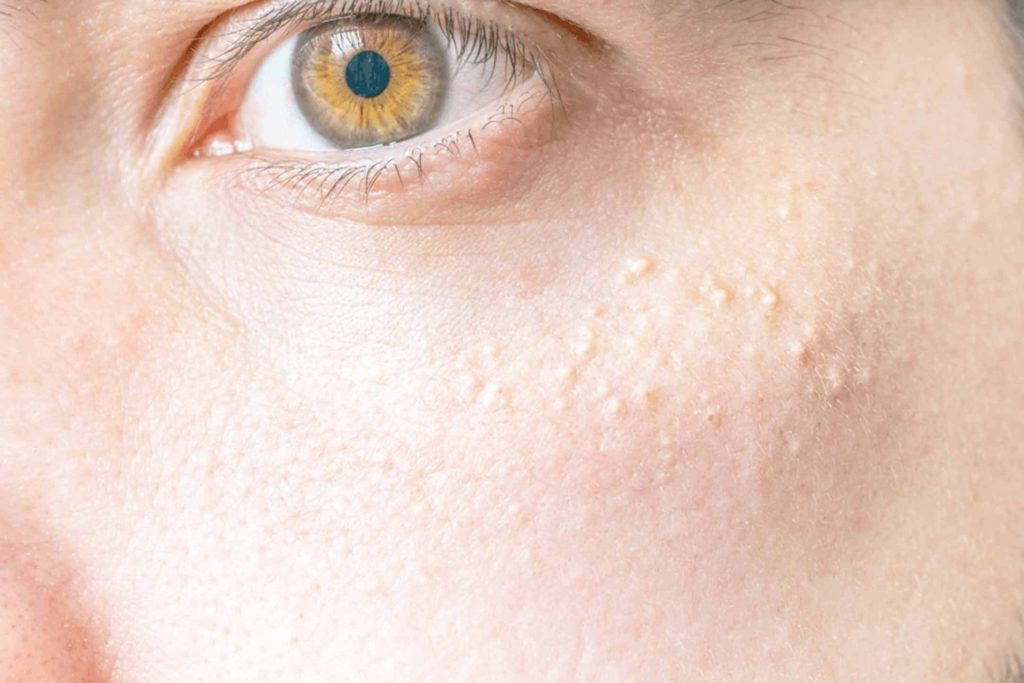
Pustules:
Another form of inflamed pimple is pustules. They have a whitehead-like appearance with a red ring around the bump. Usually, the bump is filled with white or yellow pus. Picking or squeezing pustules is not recommended. Picking your skin can result in scars or dark spots.
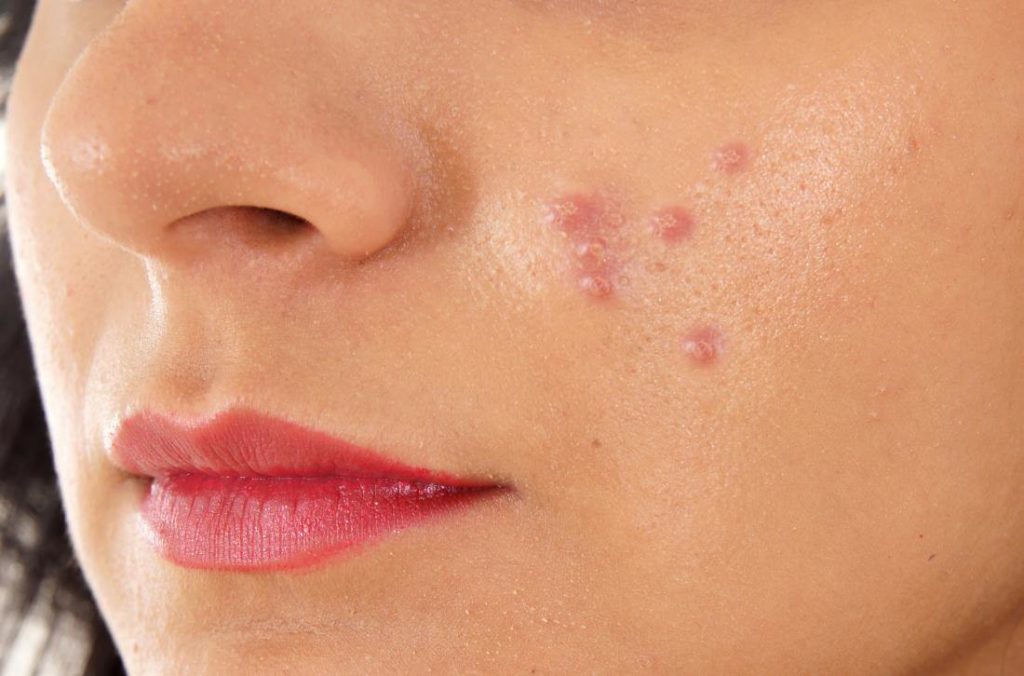
Nodules:
Big, inflamed bumps that are firm to the touch are known as nodules. They shape deep beneath the skin and are sometimes painful. Since nodules can scar, they should be treated by a dermatologist. Prescription medications may be helpful if over-the-counter therapies aren’t enough to clear them up.
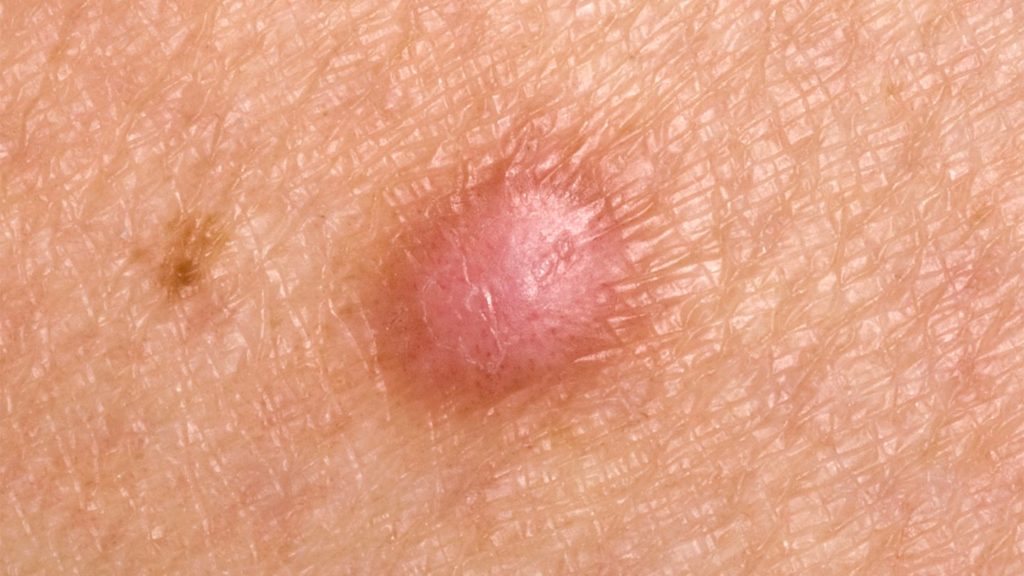
Cysts:
Cysts are huge, pus-filled lesions that resemble boils in appearance. Cysts, like nodules, can be painful and should be handled by a dermatologist to avoid scarring. Acne patients who grow nodules and cysts are thought to have a more serious case of acne.
Moderate Acne:
Your acne is considered mild if you have 20 to 100 whiteheads or blackheads, 15 to 50 inflamed bumps, or 30 to 125 total lesions. For mild to serious acne, dermatologists typically prescribe prescription drugs. It may take a few weeks for you to notice a difference, and your acne may start to worsen until it improves.
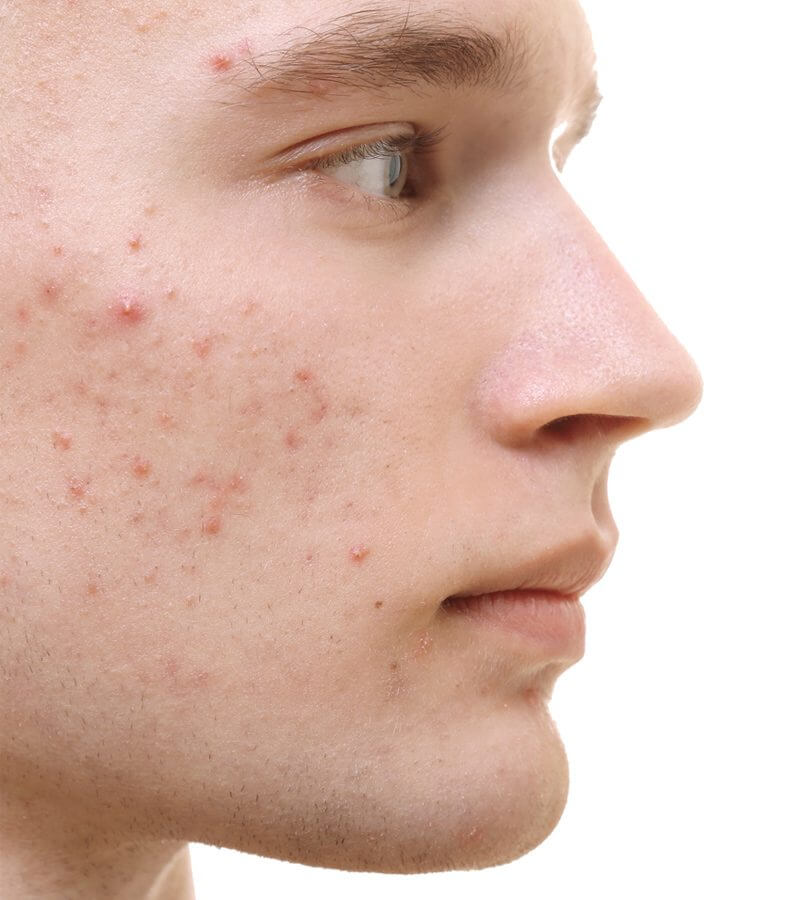
Acne Nodulocystic Serious:
Multiple inflamed cysts and nodules are present in people with extreme nodulocystic acne. Acne can turn a deep red or purple colour. It sometimes results in scarring. Scarring may be reduced if treated promptly by a dermatologist. To reduce the size and painful inflammation of nodules and cysts, a doctor can inject corticosteroids directly into them.
Acne Conglobata:
One of the most extreme forms of acne is acne conglobata. It consists of numerous inflamed nodules that are bound to other nodules underneath the skin. The spine, chest, arms, and buttocks may all be affected. It sometimes results in scarring. This form of acne is more common in men and can be brought about by the use of steroids or testosterone. A dermatologist should be consulted as soon as possible.
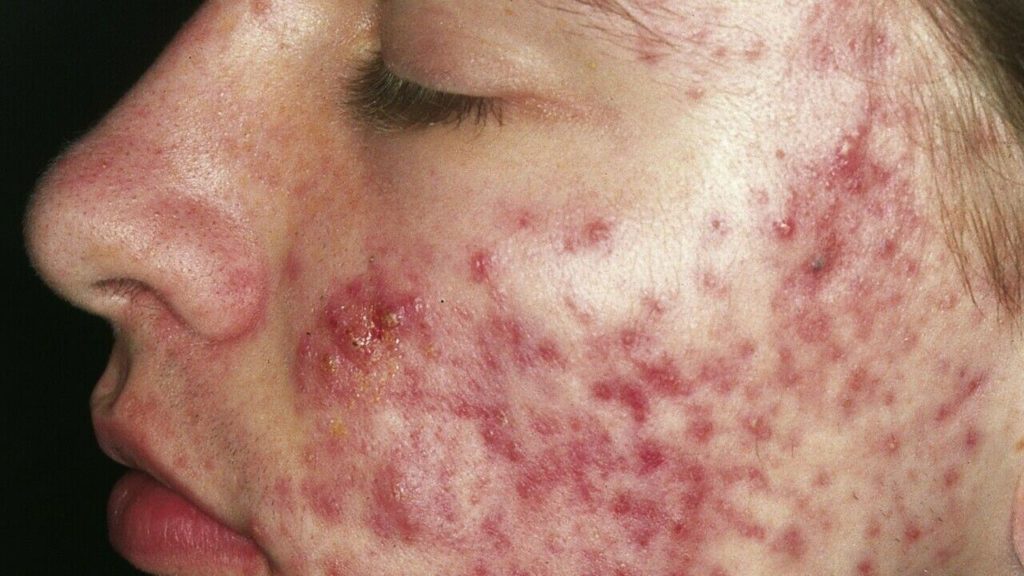
Acne Mechanica:
Heat, friction, and pressure against the skin trigger acne mechanica, which is often the product of wearing athletic equipment such as a helmet or baseball cap. Since it affects so many athletes, it’s often referred to as “sports-induced acne.” Wearing an absorbent material under athletic equipment and showering soon after exercise are two preventive steps.
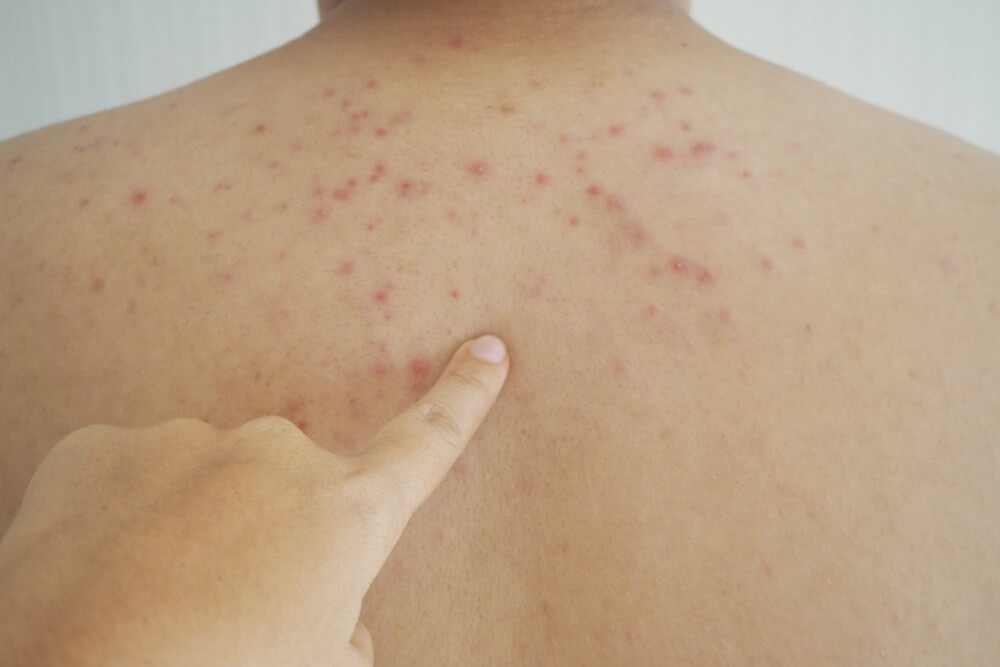
Early Symptoms of Folliculitis:
Folliculitis is a hair follicle inflammation or infection that can lead to a boil. Around individual hairs, tiny pimples with whiteheads emerge, often surrounded by red skin. It can be itchy, tender, and inconvenient, but it is not as painful or as deep as a boil. Staph bacteria, which is the most common cause of both folliculitis and boils, may enter the skin through shaving or rubbing from tight clothing.
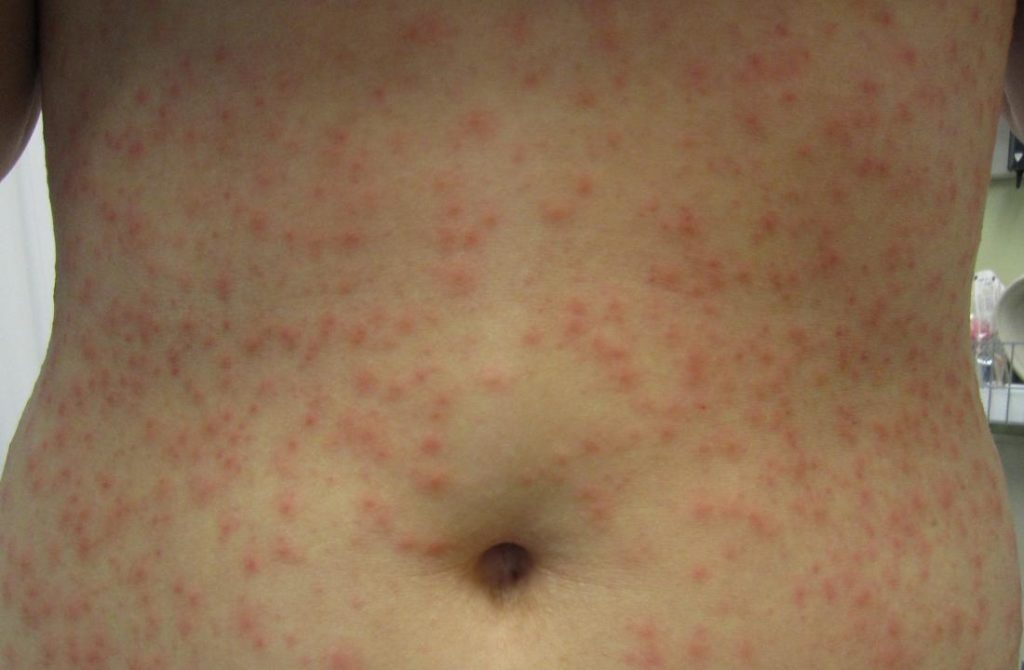
Related:
Acne Types – Acne Diseases:
Acne Around Mouth
Baby Acne
Does Chocolate Cause Acne?
Chest Acne
Acne Keloidalis Nuchae
Fungal Acne
Body Acne
What Is Acne Conglobata?
Scalp Acne: What You Need to Know
These Are 2021’s Top 12 Acne Healing Body Washes
Everything You Need to Know About Butt Acne
Acne Treatments – Products:
Cerave Acne Foaming Cream Cleanser
Vitamin a for Acne
Cerave Acne
Spironolactone for Acne
Minocycline for acne
Acne Spot Treatment
CLINIQUE Acne Solutions
Acne icd 10 Code


